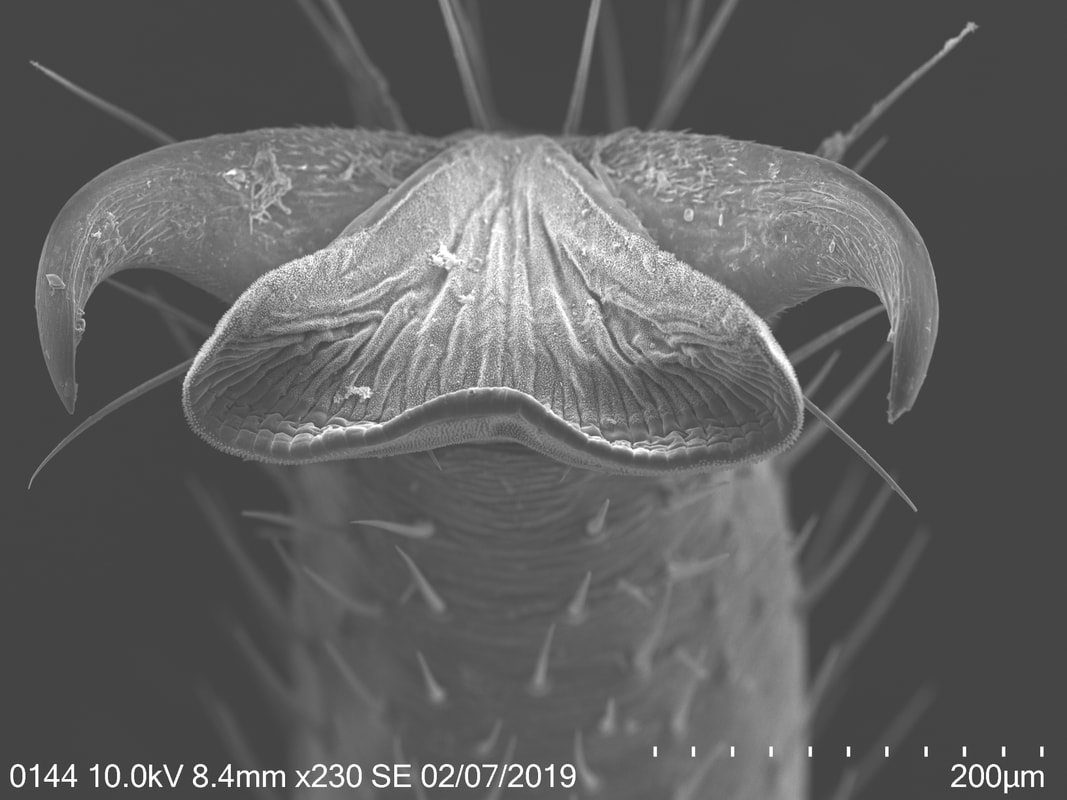Spotted lanternfly and its interactions with its host plants
The lanternfly invasion and host plant utilization. Spotted lanternfly (SLF), Lycorma delicatula (Hemiptera: Fulgoridae), is an emerging, highly invasive insect pest of fruit crops and trees in the eastern US. It originated from and is widely distributed in China, but due to its highly polyphagous behavior and presumably high ecological tolerance it has successfully invaded other countries such as Korea and Japan. It was first detected in Berks County, PA in 2014. Since this first detection, the spotted lanternfly has rapidly spread to 13 counties in PA. Additionally, it was detected in New York and Delaware (fall, 2017), Virginia (January, 2018), as well as in West Virginia and Maryland (2019). Theoretical range expansion by now includes all of Maryland except western Garrett County. Spotted lanternfly is one of the most aggressive leafhopping pests in Mid-Atlantic region: it is extremely polyphagous and can utilize over 70 host plants, such as apple, plum, cherry, peach, apricot, grape, pine, tree of heaven (preferred tree host), as well as many ornamental plants.
|
Nymphs and adults cause substantial damage by sucking phloem sap and subsequently reducing photosynthesis, causing weeping wounds, and creating conditions for sooty mold. Lanternfly nymphs switch host plants during their development. However, little is known about the relationship between the lanternfly and its tree hosts, as well as about the mechanisms of its unusual use of plant hosts during development (i.e. polyphagous behavior of early instars and nearly monophagous behavior of adults). Furthermore, it is critical to not only determine a possible host plant range which can be attacked at each nymphal stage, but also confirm the utilization of the host plants for feeding (and not for resting, migration, laying eggs, etc.). To address these limitations in our knowledge of the lanternfly biology and ecology, the Lamp Lab largely utilizes microscopy and molecular biology tools to (1) explore changes in external morphology of the lanternfly during its development, and (2) to confirm the utilization of host plants.
|
Scanning electron microscopy. To explore the morphological adaptations of the lanternfly to host plant utilization, we focus on the following two objectives with regard to each developmental stage: (a) to assess changes in morphology of the lanternfly mouthparts (stylets and labium), and (b) to assess changes in morphology of the lanternfly tarsal tips (arolia and tarsal claws). The labium, stylets, and tarsal tips are the structures which are associated with primary contact of the lanternfly with its host plant, and which potentially facilitate the lanternfly successful host plant use. We assessed the developmental changes in these structures using both scanning electron microscopy (SEM) and morphometric analysis. These structures undergo substantial morphological and morphometric changes throughout the lanternfly development which could potentially indicates the lanternfly association with certain host trees at each developmental stage.
Utilization of molecular biology tools. To confirm host plant consumption and explore the potential host plant range of the lanternfly, we use molecular biology techniques to detect host plant DNA within the lanternfly gut contents. Plant DNA detection in insect gut contents has been one of the most accurate ways to confirm host plant utilization, however this method becomes challenging when dealing with sap-feeding insects: (a) the host plants are difficult to discern because piercing-sucking insects, such as the spotted lanternfly, often cause no direct symptoms to plants; (b) the lack of plant tissue in the gut of a piercing-sucking insect that feeds on phloem makes gut contents difficult to discern. Currently, we utilize Sanger sequencing to obtain a portion of plant chloroplast DNA region within the lanternfly gut contents. We successfully isolate and identify plant DNA for 'single-DNA'-samples (i.e. when there is only one ingested host plant species in the lanternfly gut), and we plan to use NGS technology to explore mixed DNA samples and compose a host plant range of the spotted lanternfly.
In publications, see Avenesyan et al. 2019.
In publications, see Avenesyan et al. 2019.




